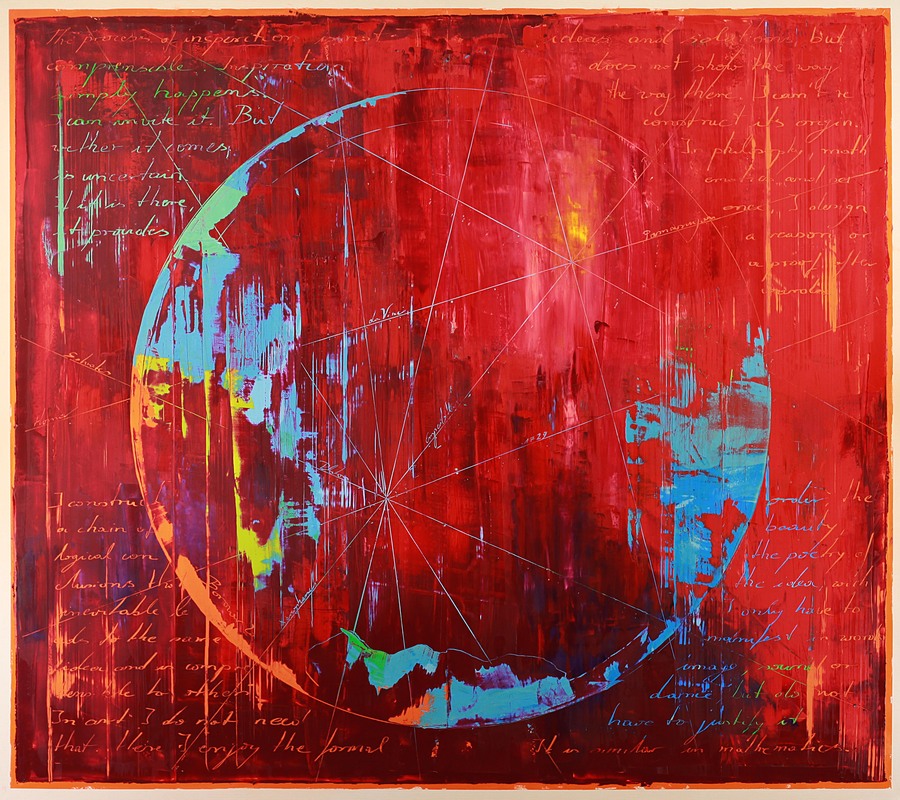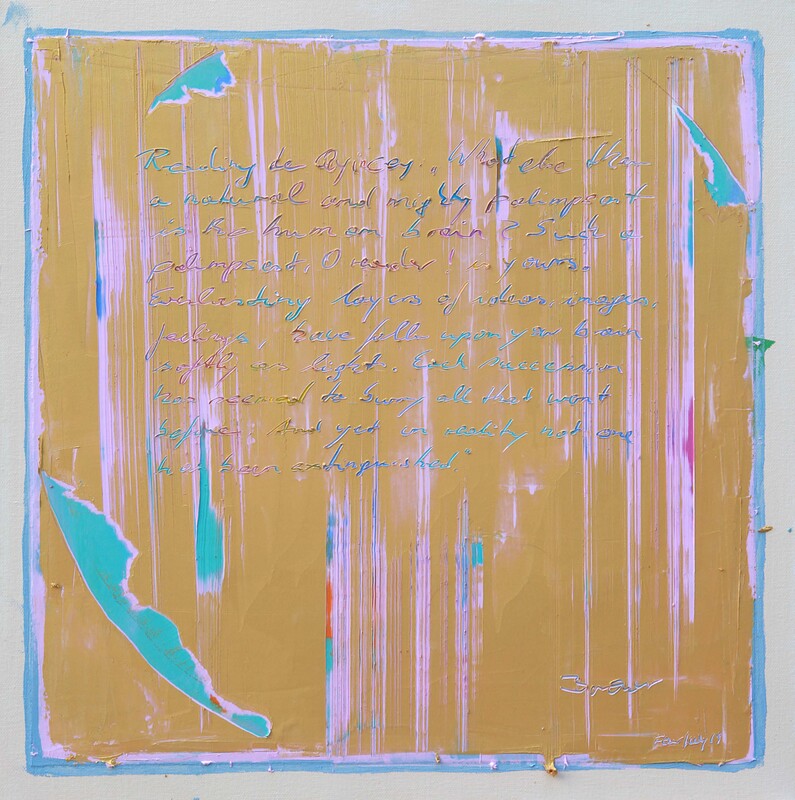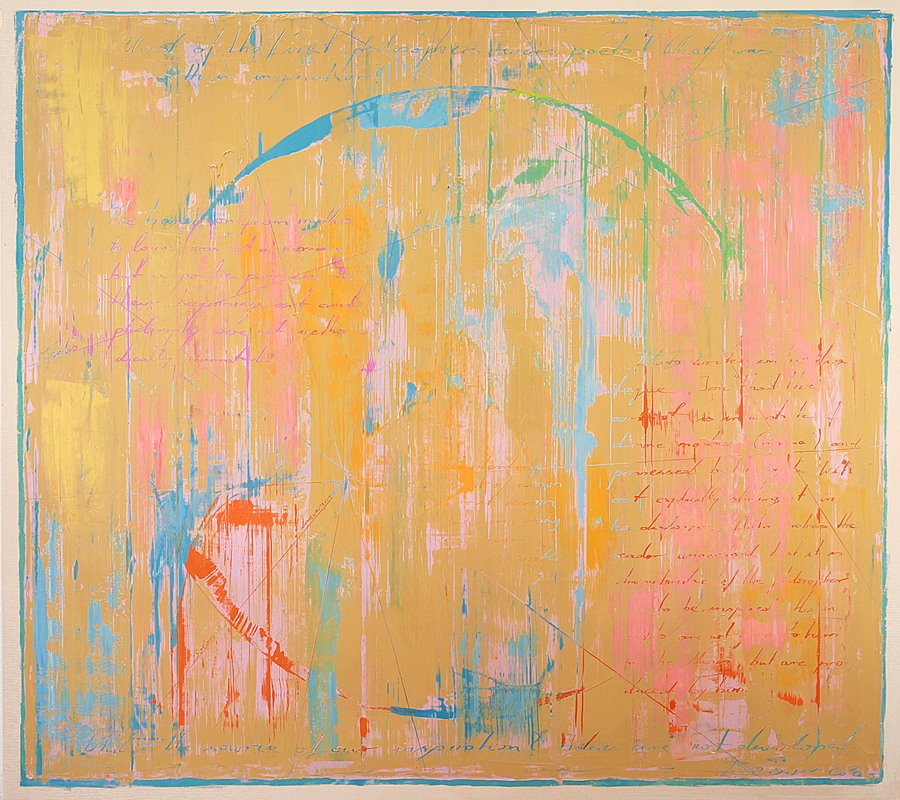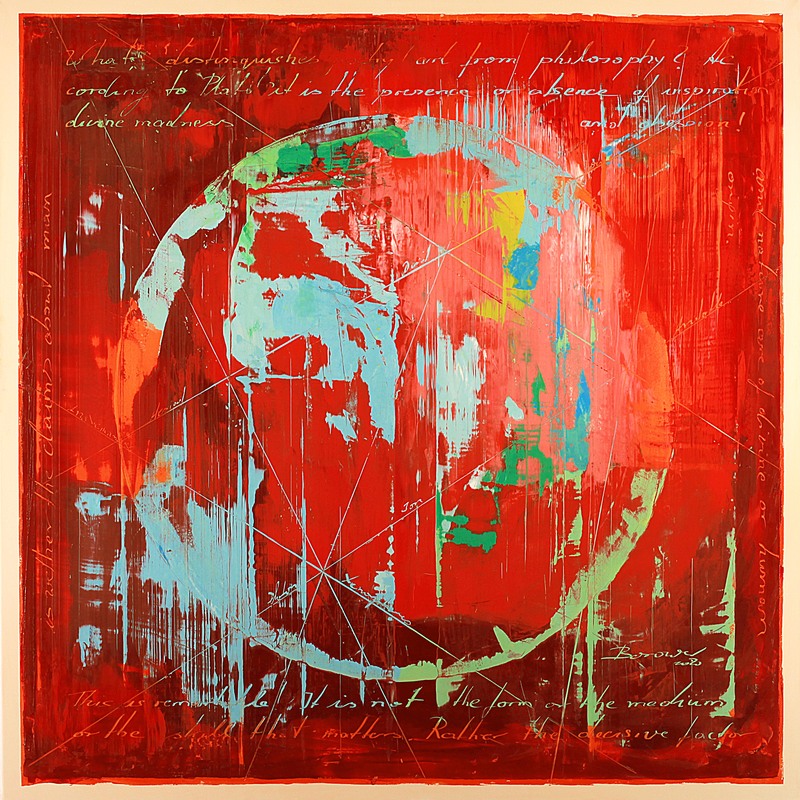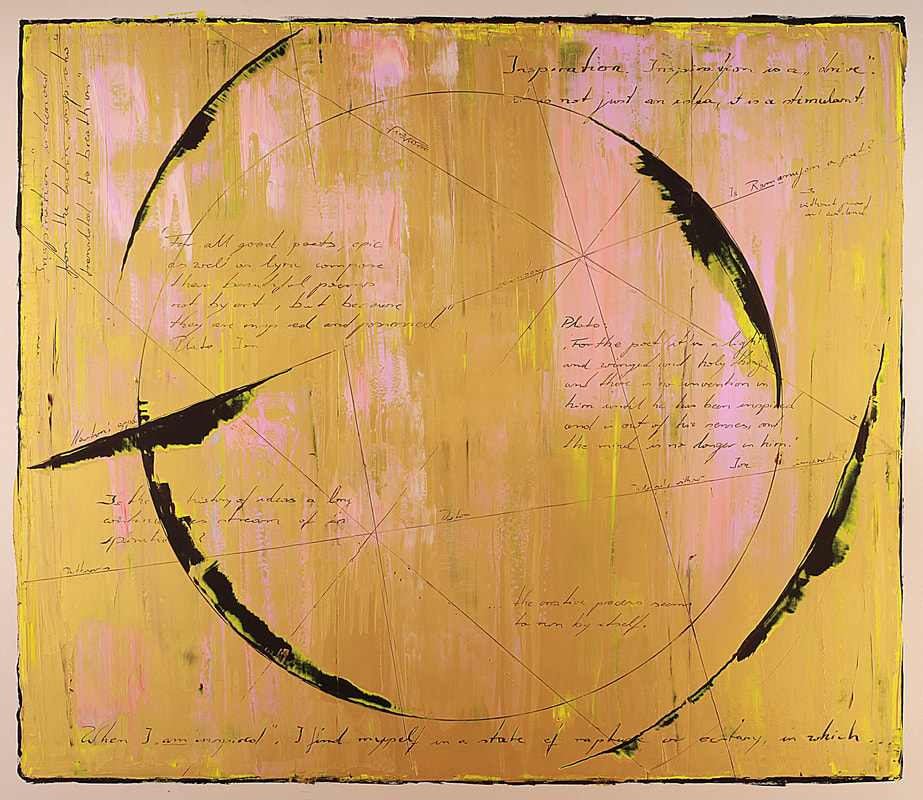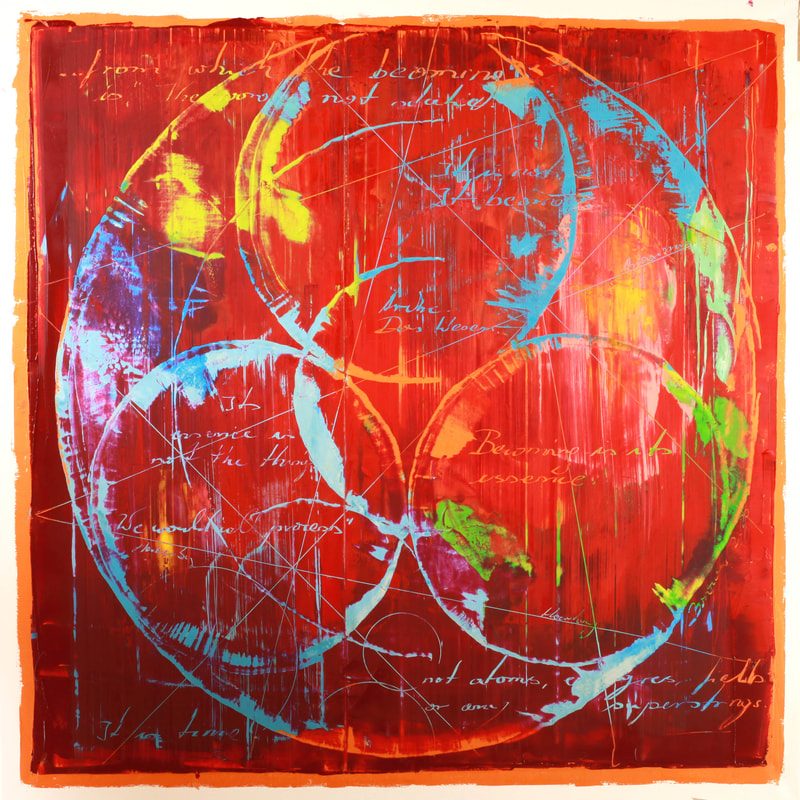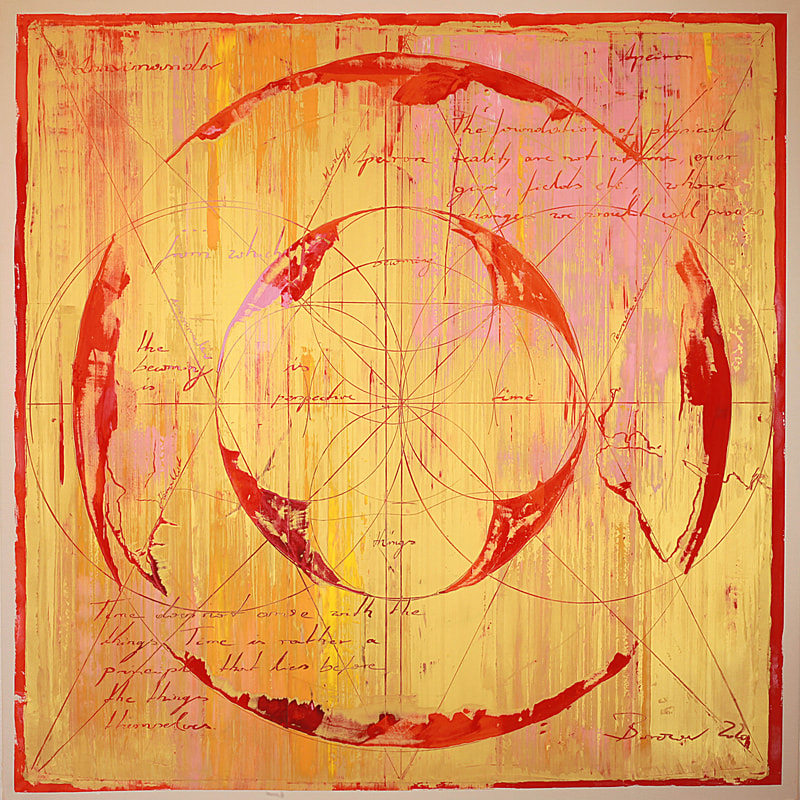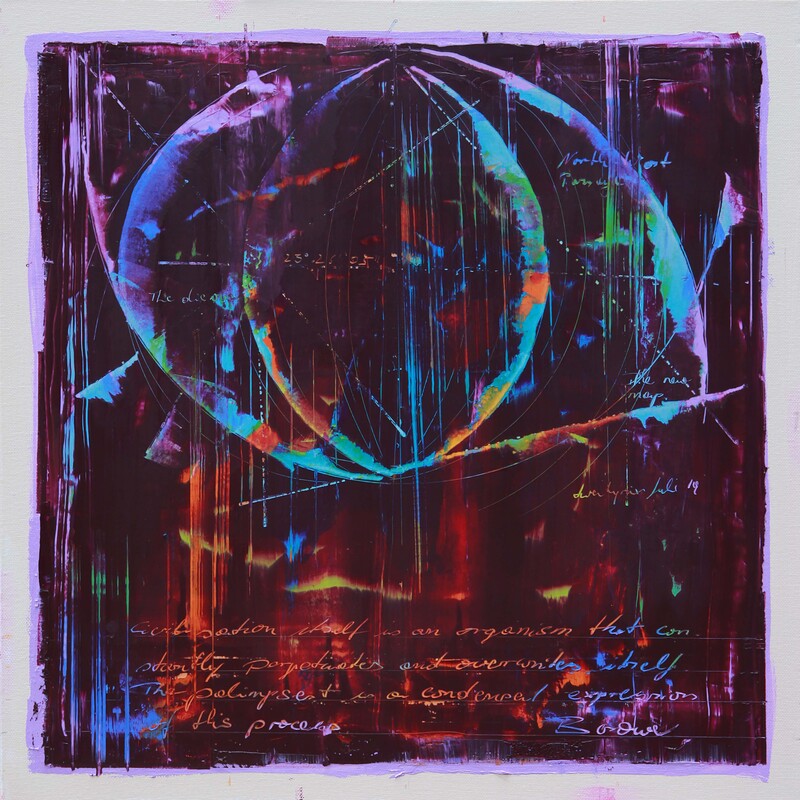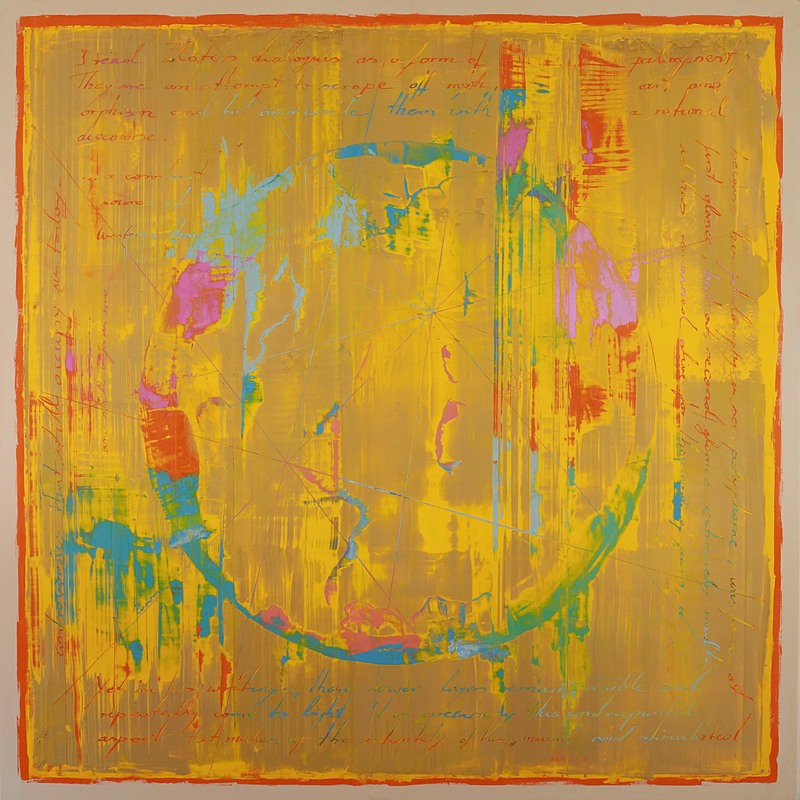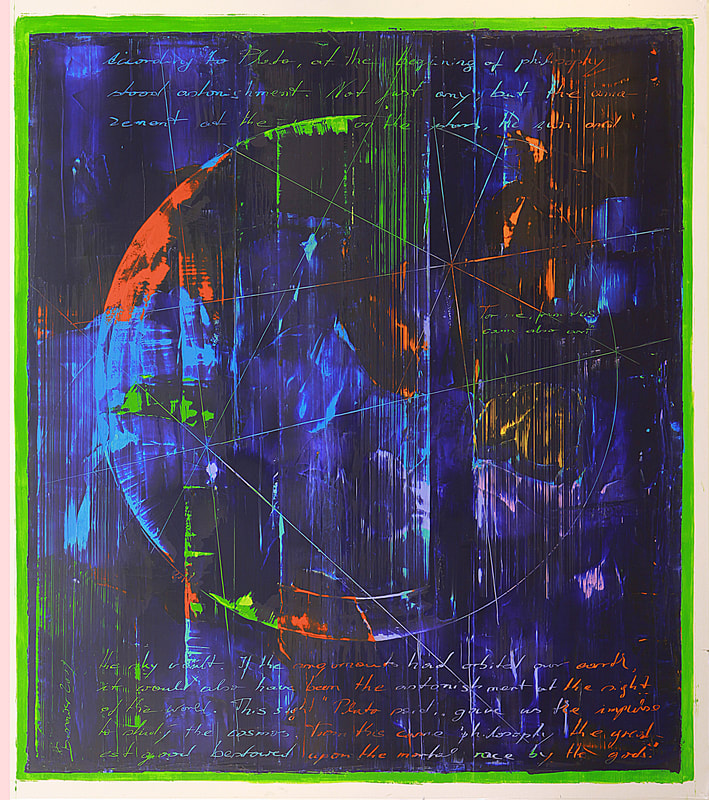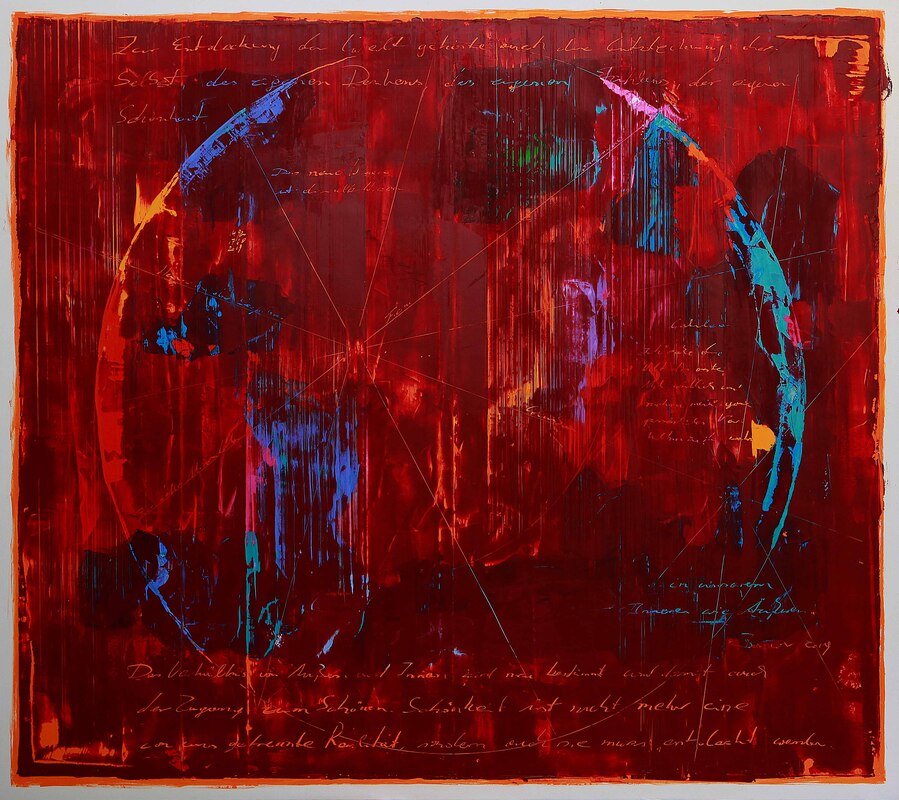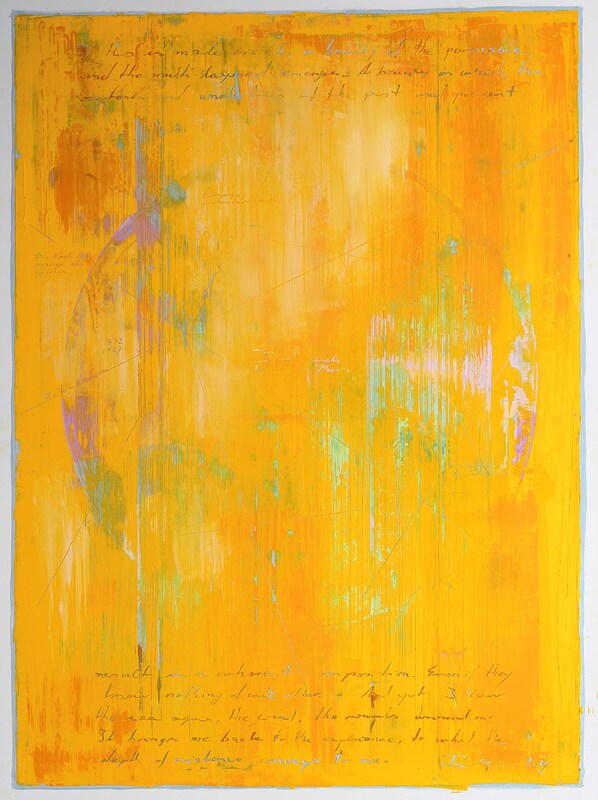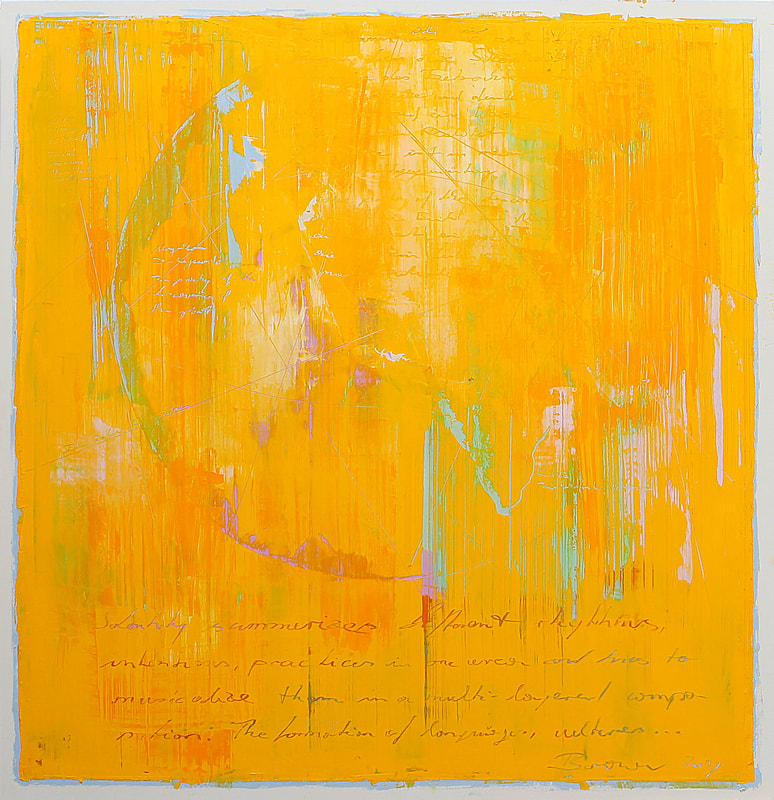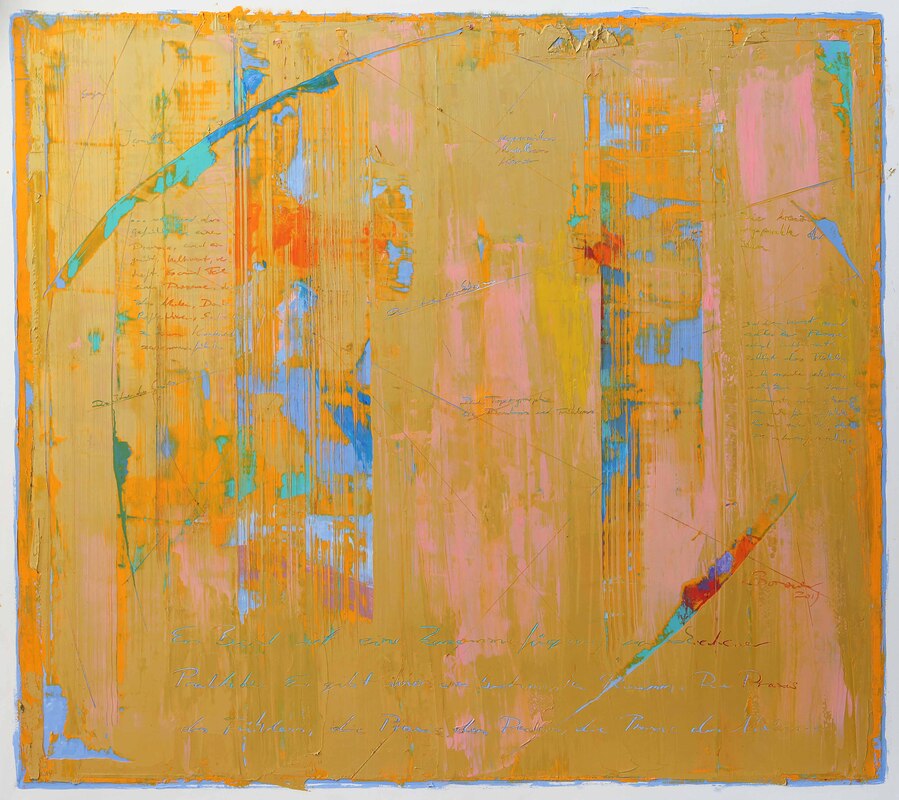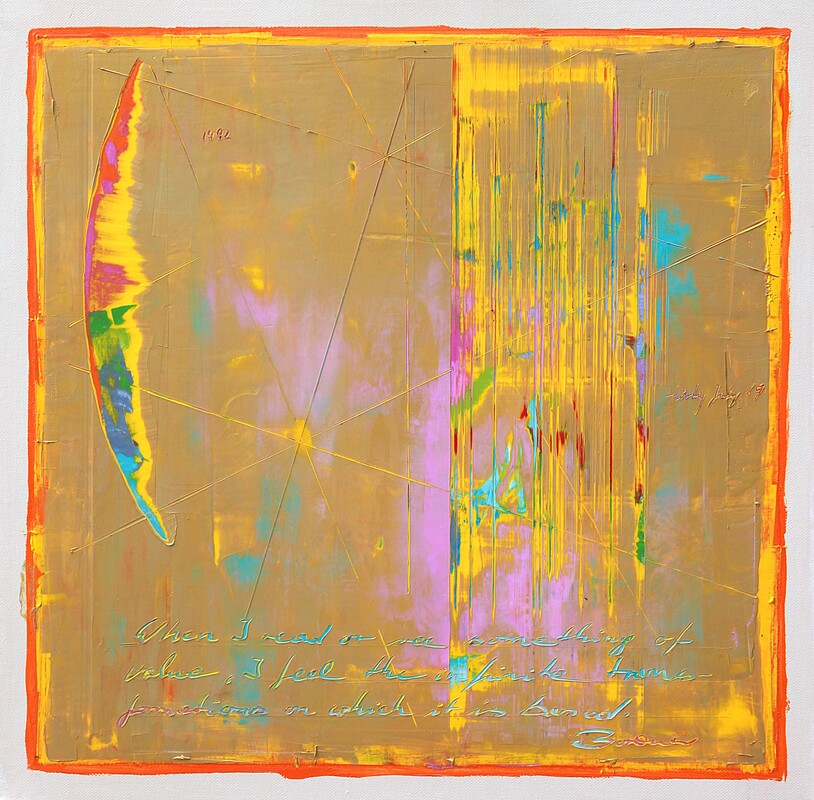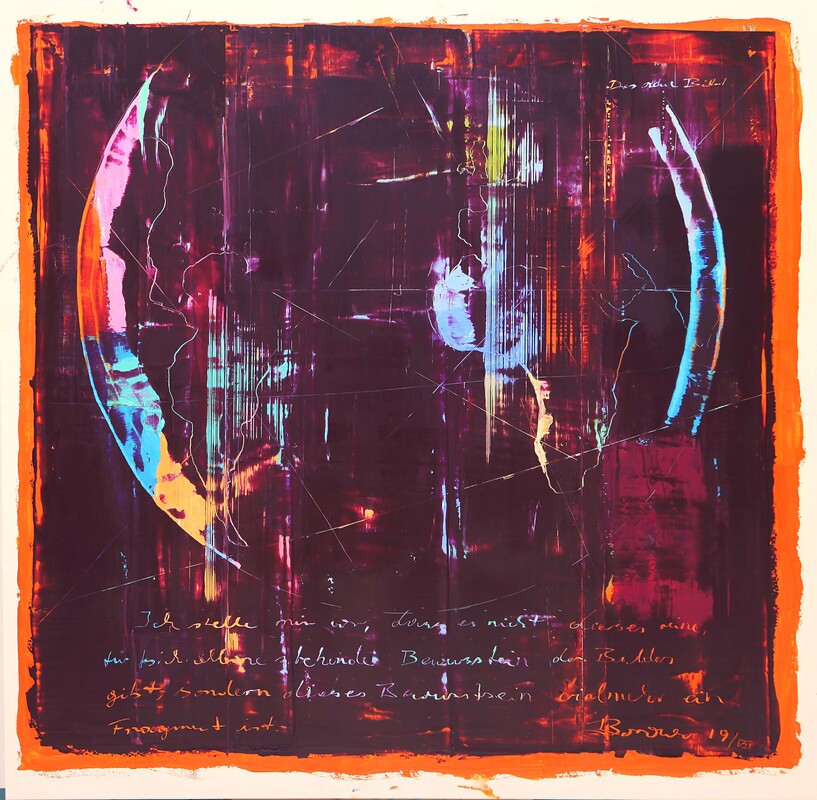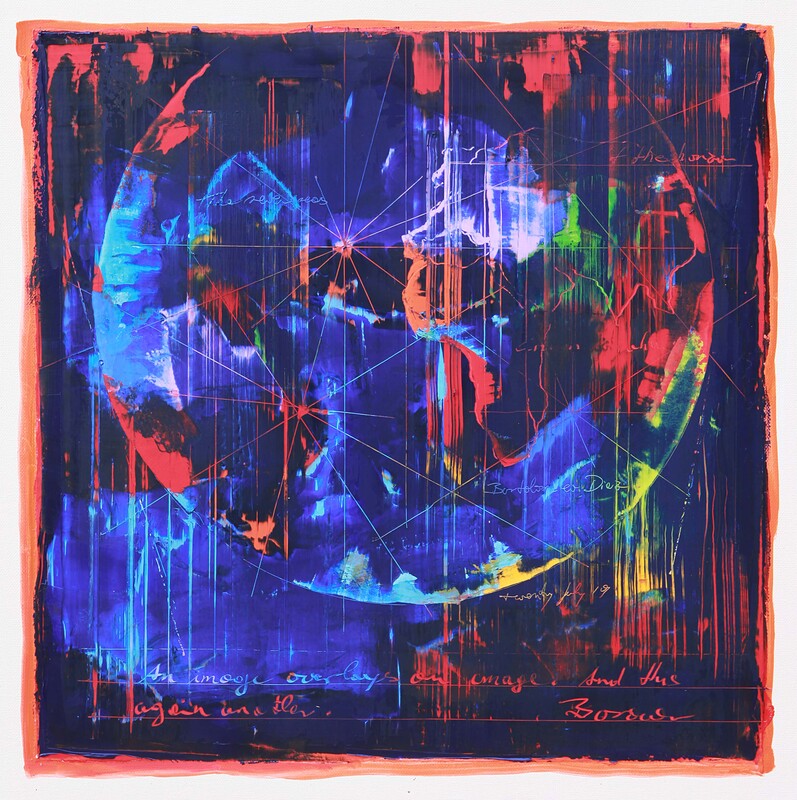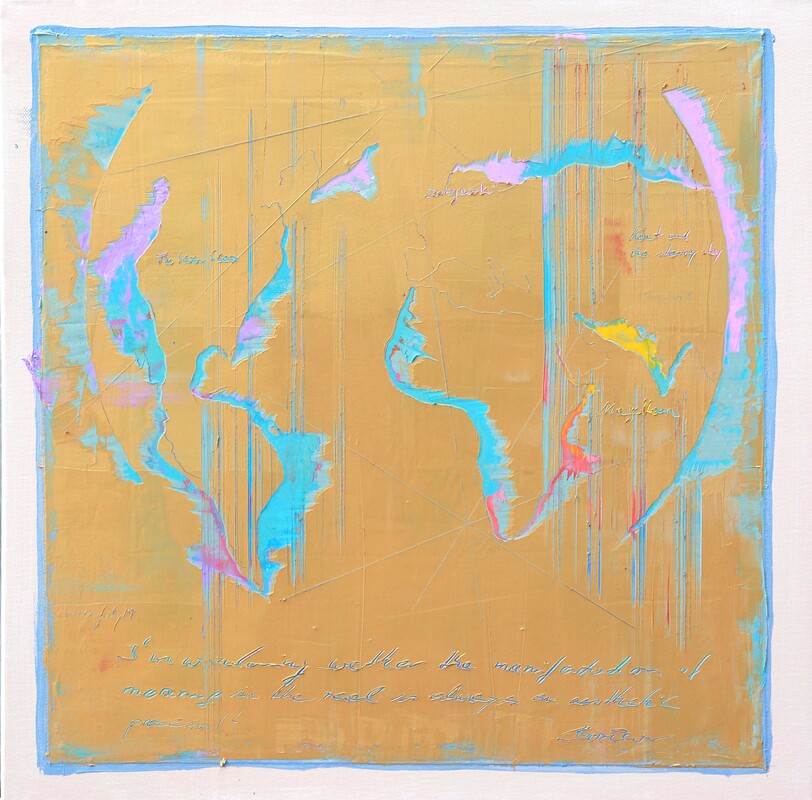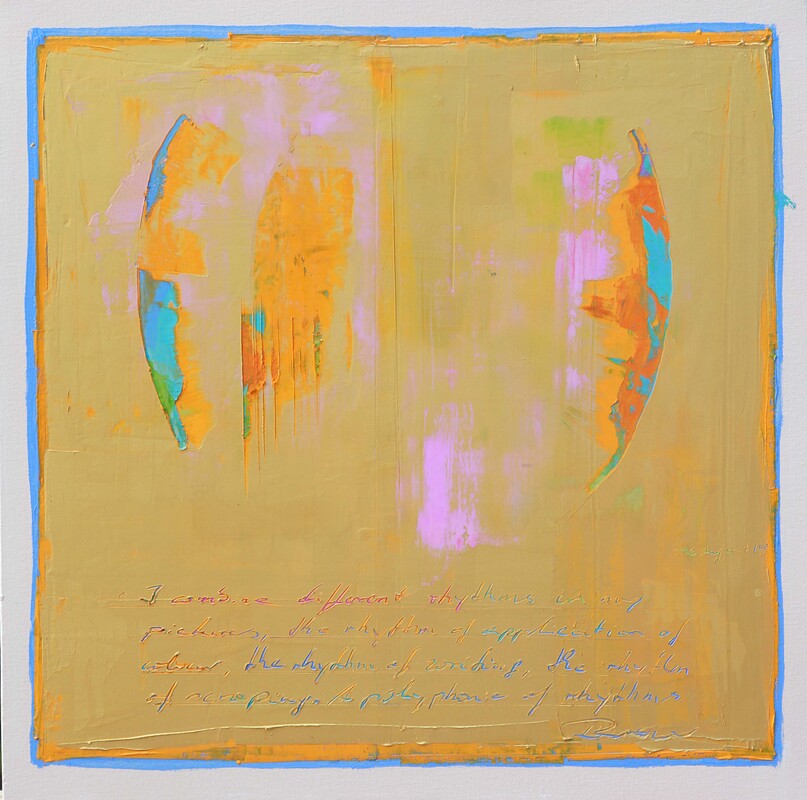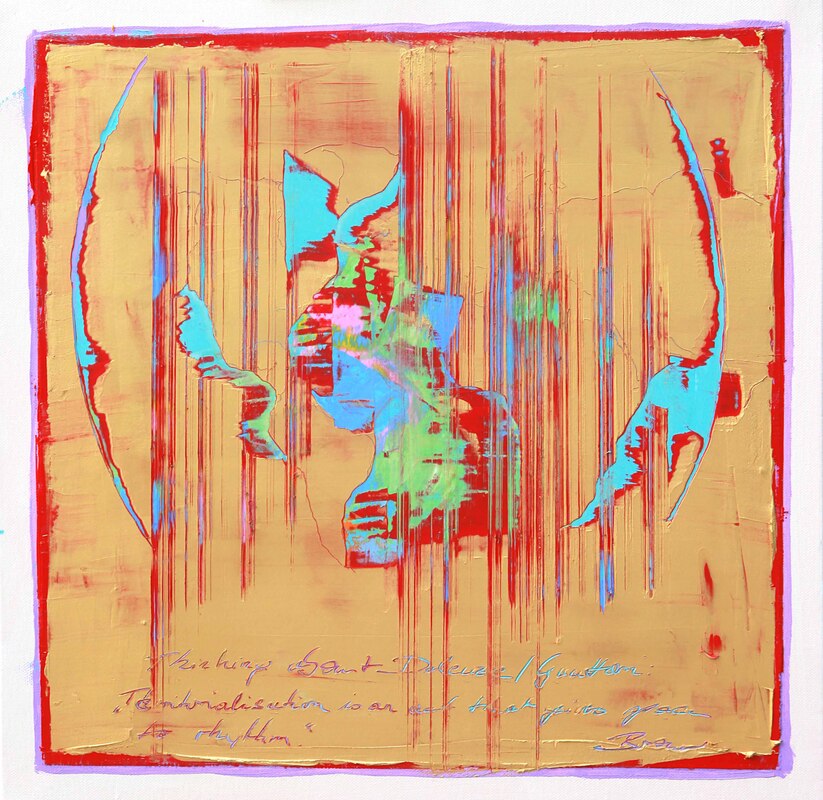The Current Cycle
The current cycle "Art & Philosophy" is based on the aesthetics of the palimpsest. Originally, a palimpsest was an ancient or medieval document that - because it was so valuable - was repeatedly scraped off and rewritten. My technique recalls this. In my paintings I apply several layers of paint and partially remove layers again. I engrave texts into the still wet oil layers, remove them if necessary and overwrite them again.
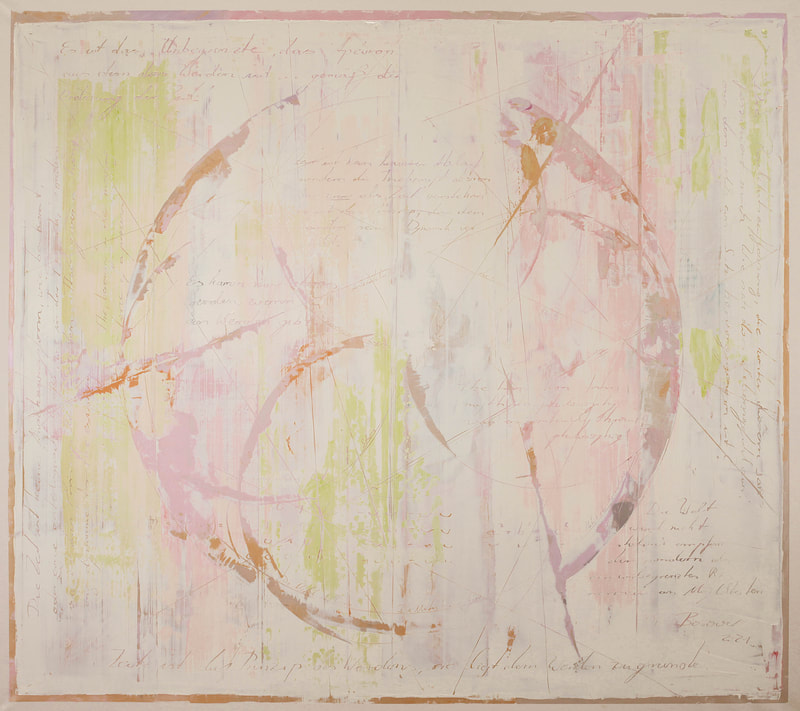
The first Arist-Philosophers. Anaximander: "Apeiron". QQuestions about the meaning of the term "unlimited". Oil on canvas. 2020. 160 x 180 cm.
On aesthetics I consider an image as a sequence and superimposition of different rhythms and practices, as their interplay, their intertwining, their musicalization, as an integration of dissonance and alterity. The image maps these rhythms and composes them into a texture. (image: Superimpositions of rhythms. 2019. mixed medio on canvas. 160 x 120 cm)
On the palimpsest: A text that inspired me. It's written 1850 by Thomas de Quincey on the nature of "palimpsests". He sees it as a metaphor: “What else than a natural and mighty palimpsest is the human brain? Such a palimpsest is my brain; such a palimpsest, O reader! is yours. Everlasting layers of ideas, images, feelings, have fallen upon your brain softly as light. Each succession has seemed to bury all that went before. And yet in reality not one has been extinguished.” 1850. This text inspired me. (image: 2019, mixed media on canvas, 50 x 50 cm.
On the origin of art and philosophy: I try to connect painting/art and philosophy. So it is for me significant that two thousand years ago the transition from religious myth to philosophy was not a prosaic but a poetic process. In their beginnings, art and philosophy were not separated from each other.
On the origin of art and philosophy: What distinguishes poetry/art from philosophy? According to Plato it is the presence or absence of inspiration, divine madness and obsession. This is remarkable for me. It is not the form or the medium, or the skill that matters. Rather, the decisive factor is whether the claims about man and nature are of divine or human origin. (Image: 2019. mixed media on canvas. 130 x 130 cm)
On the palimpsest: I see my paintings as a kind of "palimpsests". Originally, a palimpsest is a document that has been scraped off and overwritten. For me, though, it is a presentation that brings the deeper, previous, contradictory into a present. (Image: " The method of Palimpsests". 2019. mixed media on canvas, 105 x 130 cm)
On Inspiration. Plato: "For the poet is a light and winged and holy thing, and there is no invention in him until he has been inspired and is out of his senses, and the mind is no longer in him." Image: Oil on Canvas. 2020. 130 x 150 cm.
The first Artist-Philosophers. Anaximander: In the beginning is the unlimited, from which the becoming is. " Anaximander". 2020. mixed media on canvas, 85 x 85 cm)
The first Artist-Philosophers. Anaximander: Time does not arise with the things. Time is rather a principle that lies before the things themselves.
Image: Oil on Canvas. 2020. 130 x 150 cm.
Image: Oil on Canvas. 2020. 130 x 150 cm.
On the palimpsest: I consider the palimpest not only as a painting created by the application and removal of layers, but as a cultural-philosophical metaphor. Every culture is a palimpsest. Every cultural expression is a palimpsest. The earlier and deeper layers have not simply disappeared, they are there. And often these layers differ fundamentally and even contradict each other. (Image: Palimpsest. 2019. mixed media on canvas, 50 x 50 cm)
On the palimpsest: I see Plato's dialogues as a form of palimpsest. They are an attempt to scrape off myth and art and to overwrite them with a rational discourse. Yet in his writings, these lower layers remain visible and repeatedly come to light. It is precisely this contrapuntal aspect that makes up the identity of his philosophy. (Image: Plato's Identity. 2020. Mixed media on canvas. 130 x 130 cm
On the origin of art and philosophy: According to Plato, at the beginning of philosophy stood astonishment. Not just any, but the amazement at the view on the stars. "This sight," Plato said, "gave us the impulse to study the cosmos. From this came philosophy, the greatest good bestowed upon the mortal race by the gods”. This is very beautiful. But I'm wondering if this is the whole truth. I will come back to that. (image: According to Plato. 2019. Mixed media on canvas, 180 x 160 cm)
On aesthetics: The relationship between outside and inside is reinvented and thus the access to beauty is also redefined. Beauty is no longer a separate reality from us, but must also be 'discovered'. (Image: Die Entdeckung der Welt und die Entdeckung des Selbst. 2019. mixed media on canvas, 160 x 180 cm)
On aesthetics/palimpsests: If this is made visible, a beauty of the permeable and the multi-layered emerges. A beauty in which the overtones and undertones of the past and present result in a coherent composition. (Image: If this is made visible. 2019 mixed media on canvas, 160 x 120 cm)
On aesthetics/palimpsests: Identity summarizes different rhythms, intentions, practices in one area and tries to musicalize them in a multi-layered composition. (Image: Identity musicalizes. 2019. mixed media on canvas, 125 x 120 cm)
On aesthetics: When a dynamic image is calm in certain places, it is not a contradiction. When a previous text or image is superimposed with a new one, those is no antinomy. It is precisely this inherent “otherness” that may give an image, a text, a person their pecuiarity, That is, what we call identity. The Other does not have to be a contradiction, it can also be a shift, a permutation of the obvious. It can be a depth. Layers on layers. Meanings over meaning. (Image: It can also be a shift, a permutation of the obvious. 2019. mixed media on canvas, 120 x 160 cm)
On aesthetics: In art, everything becomes practice - even the emotions. I I'm doing something, I'm aware of that, I'm looking at which the feelings I develop ... so the emotion is cultivated, rehearsed, deepened. It becomes part of a process that involves painting,thinking, reflecting, writing into a work of art. (Image: Die Topographie des Denkens und Fühlens, 2019. mixed media on canvas, 160 x 180 cm)
When I read or see something of value, I feel the infinite transformations on which it is based".
text: D. Borower
text: D. Borower
|
I imagine that there is not this one, self-standing consciousness of the image, but that this consciousness is rather a fragment.
text: D. Borower |
Ich stelle mir vor, dass es nicht dieses eine, für sich alleine stehende Bewusstsein des Bildes gibt, sondern dieses Bewusstsein vielmehr ein Fragment ist.
Text: D. Borower |
An image overlays an image. And this again another one.
text: D. Borower
text: D. Borower
